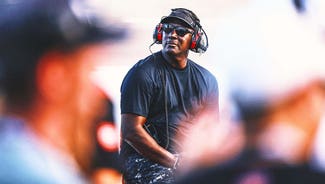
Race more wide open than ever?
When NASCAR unveiled its “Car of Tomorrow” back in 2007, one of the stated goals for the vehicle was that it would equalize competition and prevent the big teams from dominating the little ones, or one manufacturer having an advantage over the other three.
The COT insured that all cars, regardless of team or manufacturer, would have a virtually equal aerodynamic footprint, meaning no one would have an advantage over anyone else.
It didn’t quite work out that way, of course. Jimmie Johnson has won four consecutive NASCAR Sprint Cup championships in three different ways: With the old car, a mixed season of old car and COT and the COT only.
But whether by design or by sheer happenstance, NASCAR seems to have come up with a different and much more efficient way to well and truly jumble the competitive balance with its combination of double-file restarts and multiple green-white-checkered attempts.
The results so far this year have been eye-opening, to say the least.
• In the season-opening Daytona 500, race-winner Jamie McMurray led only the final two laps, as the race finished under green-white-checkered flags.
• At Las Vegas, Jeff Gordon led 219 of 367 laps, but finished third.
• At Atlanta, Kasey Kahne finished fourth after leading a race-high 144 laps.
• At Bristol, Johnson made the race-winning pass with seven laps to go. Kurt Busch, who led 278 of 500 laps, finished third.
• Denny Hamlin passed Jeff Gordon on the final green flag to win a green-white-checkered finish at Martinsville.
• Ryan Newman did the same thing to Gordon the following race at Phoenix, where he won despite leading only four laps. Three other drivers led at least 104 laps; they all finished between third- and eighth-place.
• Hamlin led only the final 12 laps at Texas, taking his one lead on the race’s final restart and holding it until the end. Gordon led the most laps in the race and finished 31st.
• Kevin Harvick led only two laps at Talladega, using a last-lap pass of Jamie McMurray to win. Harvick’s teammate Jeff Burton led the most laps and finished 28th for his troubles.
• And last Saturday night, Kyle Busch passed Gordon on a restart with five to go to win at Richmond International Raceway.
Who ends up in Victory Lane at any given race where there is a late caution flag often comes down to pit strategy.
“The problem you run into this these late-race restarts, there's so many cars on the lead lap,” said Dave Rogers, Busch’s crew chief. “You're at Phoenix and there's 25 cars on the lead lap. You can have the best car, but it's going to come down to chance.”
Rogers said planning helps, but only to a degree.
“We talk about it. We have a game plan long before the race ever starts,” he said. “But you do have to adjust on the fly because of your competitors. They're changing it up. If we could have kept only seven or eight cars on the lead lap today, it would have been a whole lot easier. But when you have 25, 28 cars, it's a little bit more difficult.”
Johnson agreed.
“It’s really made (the) finish less predictable,” he said. “At times when I would be convinced that four tires wouldn’t (have) worked, it has worked. Two tires used to be the call at that moment and it still does work out, but it has opened the door for four-tire pit stops in the closing laps. It has really changed strategy, and I don’t know if there really even is a strategy now. It’s more what the masses do. If you’re on two (tires) and there are a lot of guys that stay out on two, then you’re probably in good shape. If there isn’t and you took two when a lot of guys took four, then you’re a sitting duck.”
Gordon said one of the reasons he’s not yet won this season is that his cars generally are set up to function best on long runs, not two-lap sprints to the checkered flag.
“Our cars that we've been leading those laps are not the kind of cars that you want a green-white-checkered or a late caution,” Gordon said. “That's something you have to think about. You have to try to figure out how to make an air-pressure adjustment or do certain things to make your car really good on those short runs because we're seeing them every weekend and that's how you're going to have to win races. Just keeps us working harder.”
So what will it all mean when the Chase for the Sprint Cup rolls around? That’s just it — no one knows.
“With all those cars on the lead lap, it’s just turning into a little bit of a crapshoot and you don’t know what’s gonna happen at the end of these things,” said 2003 Sprint Cup champion Matt Kenseth. “It just seems like there’s a caution with three or four (laps) to go every week and they keep lining them up, so whoever makes the right call and can hang on to their track position and get a really good restart has a shot at it.”
Tom Jensen is the Editor in Chief of SPEEDtv.com, Senior NASCAR Editor at RACER and a contributing Editor for TruckSeries.com. You can follow him online at twitter.com/tomjensen100 and e-mail him at speedtvanswerman@gmail.com Jensen is the author of “Cheating: The Bad Things Good NASCAR Nextel Cup Racers Do In Pursuit of Speed,” and has appeared on numerous television and radio shows. Jensen is the past President of the National Motorsports Press Association and an NMPA Writer of the Year.

